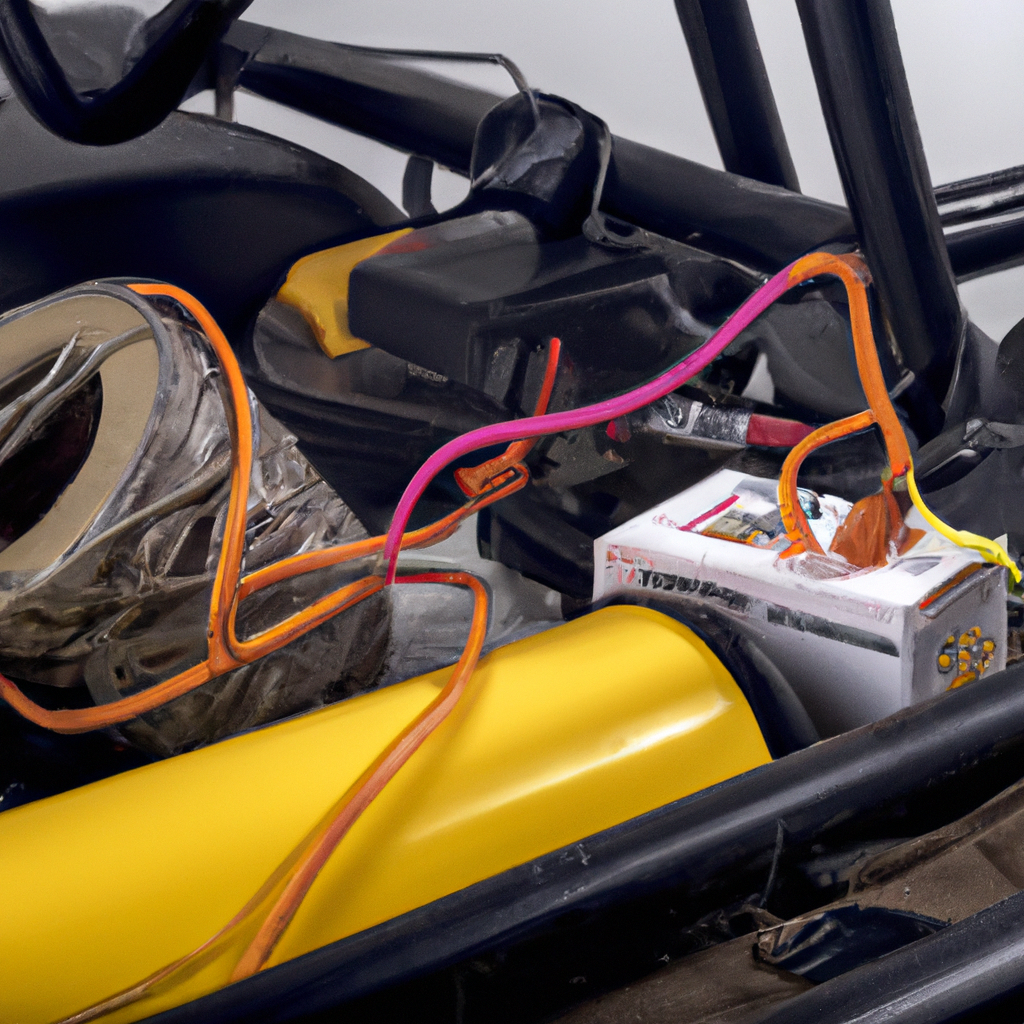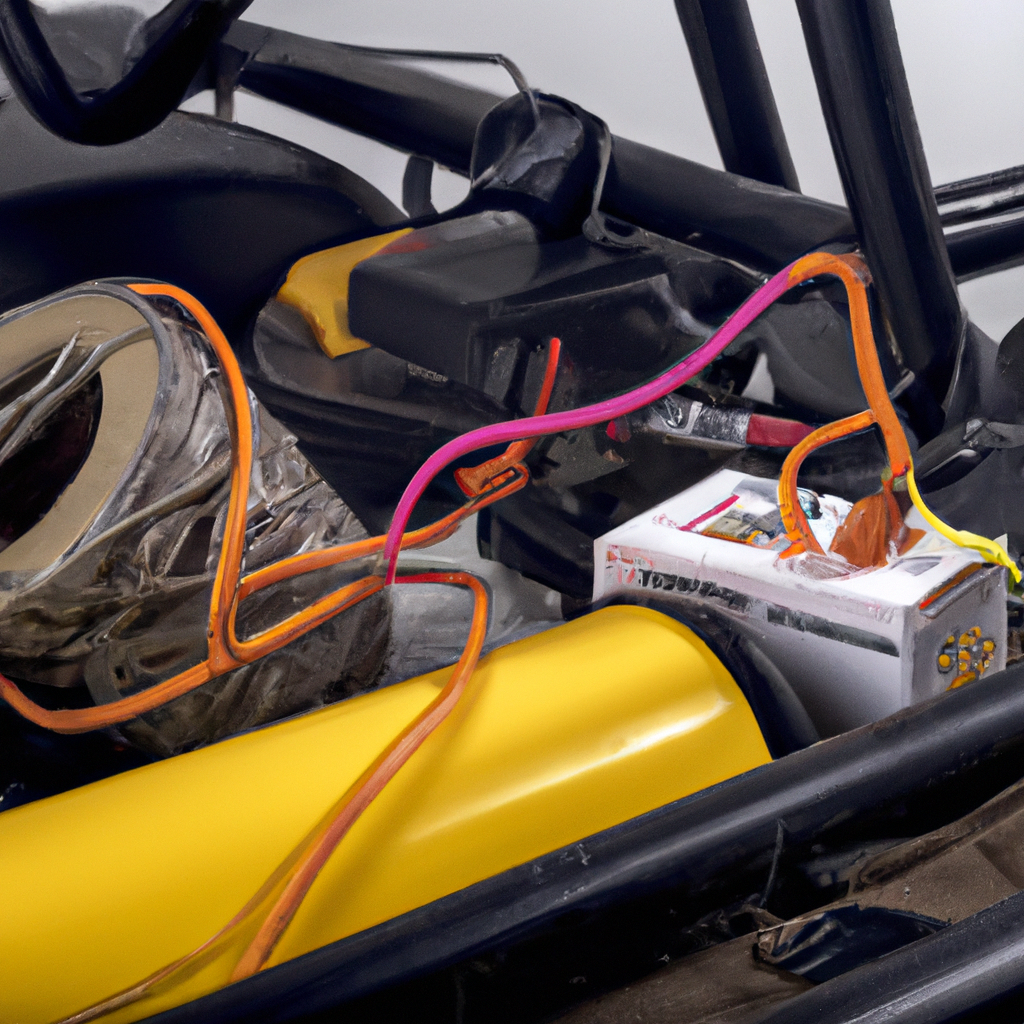We may earn money or products from the companies that may be mentioned in this post.
If you’re a golf enthusiast, you know the importance of having a fully charged golf cart battery. A dead battery can put a damper on your day out on the course. That’s where a 12V charger comes in handy. In this guide, we’ll show you the step-by-step process of charging your golf cart batteries using a 12V charger. Whether you’re a seasoned golfer or just starting out, this article will provide you with all the information you need to keep your golf cart powered up and ready to go. So grab your clubs and let’s get started!

Getting Started
Understanding your 12V Charger
Before you begin charging your golf cart batteries, it’s important to familiarize yourself with your 12V charger. The charger is an essential tool in the charging process, and understanding its features and functions will ensure a smooth and efficient charging experience. Take a moment to read the user manual that came with your charger, as it will provide important information regarding proper usage and safety precautions.
Preparing your Golf Cart
Before you can start charging your golf cart batteries, you’ll need to make sure your golf cart is prepared for the process. Begin by turning off the golf cart’s power and removing the key. This will prevent any accidental engagement of the cart during the charging process. Additionally, you should make sure that the battery compartment is clean and free of any debris that could interfere with the charging process.
Finding a Suitable Charger
Not all chargers are created equal, and it’s important to find a charger that is suitable for your golf cart batteries. Look for a charger specifically designed for 12V batteries, as this will ensure compatibility and safe charging. Additionally, consider the amperage of the charger. A higher amperage charger will charge your batteries faster, but it’s important to ensure that your batteries can handle the higher charge rate. Consult the manufacturer’s recommendations for your golf cart batteries to determine the appropriate charger amperage.
Charging Process
Connecting the Charger to the Battery
Once you have prepared your golf cart and selected a suitable charger, it’s time to connect the charger to the battery. Start by locating the positive and negative terminals on your golf cart battery. The positive terminal is typically marked with a plus sign (+), and the negative terminal is marked with a minus sign (-). Ensure that the charger is unplugged before making any connections.
Next, connect the charger’s positive clamp to the positive battery terminal, and the negative clamp to the negative terminal. It’s important to make sure the clamps are securely attached to the terminals to ensure a solid connection. Once the clamps are securely attached, you can plug in the charger.
Setting the Charging Parameters
Once the charger is connected to the battery, you’ll need to set the charging parameters. The parameters you choose will depend on your specific golf cart batteries and the charger you are using. Consult the charger’s user manual for guidance on setting the appropriate voltage and amperage for your batteries.
It’s important to note that overcharging or undercharging your batteries can lead to reduced performance and potentially shorten their lifespan. It’s recommended to follow the manufacturer’s guidelines for charging parameters to ensure optimal charging while maintaining the integrity of your batteries.
Monitoring the Charging Progress
As your golf cart batteries charge, it’s important to monitor the charging progress. Most chargers come equipped with indicators or display screens that provide information about the charging process. Take note of the charging time and ensure that the charging progress is steady and consistent.
While it may be tempting to leave the charging process unattended, it’s important to stay nearby and keep an eye on the charger. This will allow you to address any potential issues that may arise during the charging process and ensure the safety and efficiency of the charging process.
Safety Precautions
Using Proper Personal Protective Equipment (PPE)
When dealing with batteries and chargers, it’s important to prioritize safety. One of the first safety precautions you should take is to wear proper personal protective equipment (PPE). This includes safety glasses or goggles to protect your eyes from any potential battery acid splashes, gloves to protect your hands, and closed-toe shoes to protect your feet.
Avoiding Common Hazards
During the charging process, there are a few common hazards to be aware of and avoid. Firstly, never smoke or have open flames near the charging area, as batteries release flammable gases during the charging process. Additionally, ensure that the charging area is well-ventilated to prevent the buildup of potentially harmful gases.
Another common hazard to avoid is overcharging or undercharging your batteries. Both can lead to reduced performance and potentially damage your batteries. Follow the manufacturer’s guidelines for charging parameters to prevent these hazards.
Preventing Overcharging and Undercharging
Overcharging and undercharging are two common issues that can occur during the charging process. Overcharging can lead to excessive heat and damage to the battery, while undercharging can result in decreased battery performance and capacity.
To prevent overcharging, it’s important to set the charging parameters correctly and monitor the charging progress. Once the batteries are fully charged, unplug the charger to avoid any further charging.
To prevent undercharging, ensure that you are using a charger with the appropriate voltage and amperage for your batteries. Follow the manufacturer’s recommendations for charging parameters and ensure that the charging process is uninterrupted until the batteries are fully charged.
Maintenance Tips
Regular Inspection and Cleaning
Regular inspection and cleaning of your golf cart batteries are essential for their optimal performance and longevity. Periodically check the battery terminals for any signs of corrosion or buildup. If you notice any corrosion, clean the terminals with a mixture of baking soda and water. Use a wire brush or a battery terminal cleaner to remove any stubborn corrosion.
Maintaining Proper Water Levels
Many golf cart batteries are of the flooded lead-acid type, which requires regular maintenance of water levels. Check the water levels in your batteries regularly and ensure they are topped up. Use distilled water to refill the batteries, as tap water may contain impurities that can affect battery performance and lifespan. Be careful not to overfill the batteries, as excessive water can lead to electrolyte overflow during the charging process.
Avoiding Deep Discharges
Deep discharges, where the battery is discharged to a very low state, can be detrimental to battery performance and lifespan. To avoid deep discharges, it’s important to monitor your battery’s state of charge regularly. If you notice that your batteries are consistently reaching a low state of charge, consider recharging them more frequently to prevent deep discharges. Additionally, avoid leaving your golf cart batteries in a discharged state for extended periods, as this can also lead to decreased performance and capacity.
Troubleshooting
Identifying Charging Issues
Sometimes, despite taking all the necessary precautions, issues may arise during the charging process. If you experience any difficulties or notice any abnormalities, it’s important to troubleshoot the problem to ensure safe and efficient charging. Common charging issues include slow charging, charger not turning on, or charger shutting off prematurely.
Common Solutions
For slow charging, first ensure that the charging parameters are set correctly. If the charger is not turning on or is shutting off prematurely, check the power source and make sure it is functioning properly. Additionally, inspect the charger’s cables and connections for any signs of damage or loose connections. If any issues are detected, rectify them before attempting to charge again.
Seeking Professional Help if Needed
If you are unable to troubleshoot the issue or if you suspect a more serious problem with your golf cart batteries or charger, it’s best to seek professional help. There are professionals who specialize in golf cart battery maintenance and repair and can identify and address any issues you may be facing. Contact your golf cart manufacturer or a reputable service center for assistance if needed.
Frequently Asked Questions
What is the ideal charging time for golf cart batteries?
The ideal charging time for golf cart batteries can vary depending on several factors, including the battery capacity, charger amperage, and state of charge. On average, it can take anywhere from 4 to 8 hours to fully charge a set of golf cart batteries. It is important to follow the manufacturer’s recommendations for charging time to prevent overcharging or undercharging.
Can I use a higher voltage charger for faster charging?
Using a higher voltage charger for faster charging is not recommended unless your batteries are specifically designed to handle higher charging voltages. Using a charger with a higher voltage than recommended can lead to overcharging and damage to the batteries. It is best to use a charger that is specifically designed for your golf cart batteries and follow the manufacturer’s guidelines for charging parameters.
Can I charge a dead battery?
Yes, it is possible to charge a dead golf cart battery. However, it is important to note that deeply discharged batteries may require special treatment or a specific type of charger to recover. In some cases, it may be necessary to seek professional assistance to properly revive a completely dead battery. To prevent deep discharges in the future, it is recommended to maintain regular charging intervals.
How often should I charge my golf cart batteries?
The frequency of charging your golf cart batteries will depend on how often you use your golf cart and the battery capacity. As a general guideline, it is recommended to charge your batteries after each use or at least once every 30 days. Regular charging helps maintain the battery’s state of charge and prevents deep discharges. Follow the manufacturer’s recommendations for charging intervals to optimize the lifespan and performance of your batteries.
